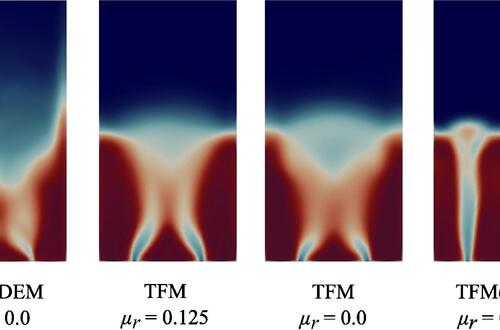Behrad Esgandari, Stefanie Rauchenzauner, Christoph Goniva, Paul Kieckhefen & Simon Schneiderbauer
Chemical Engineering Science 267; 118357. DOI: 10.1016/j.ces.2022.118357
(2023)
Share On:

We employ a two-fluid model (TFM) as well as a computational fluid dynamics coupled to discrete element method (CFD-DEM) approach to study the time averaged hydrodynamics of single- and multiple-spout fluidized beds. Simulations are validated against the experimental data of (van Buijtenen et al., Numerical and experimental study on multiple-spout fluidized beds, Chemical Engineering Science 66 (2011) 2368–2376) with four different interphase drag correlations. The kinetic theory of granular flow used for solving the motion of the solid phase in TFM, includes realistic particle–wall boundary conditions for momentum transfer and the flux of pseudo-thermal energy. Frictional stresses in TFM are modelled based on a μ(I)-rheology. We propose a new ad hoc modification of the μ(I)-rheology to account for the effect of rolling friction in TFM. In contrast, in CFD-DEM rolling friction is accounted by an additional torque. Our results show that there is a good agreement between both approaches with respect to time averaged volume fraction, solids velocities, solids fluxes and granular temperature.


